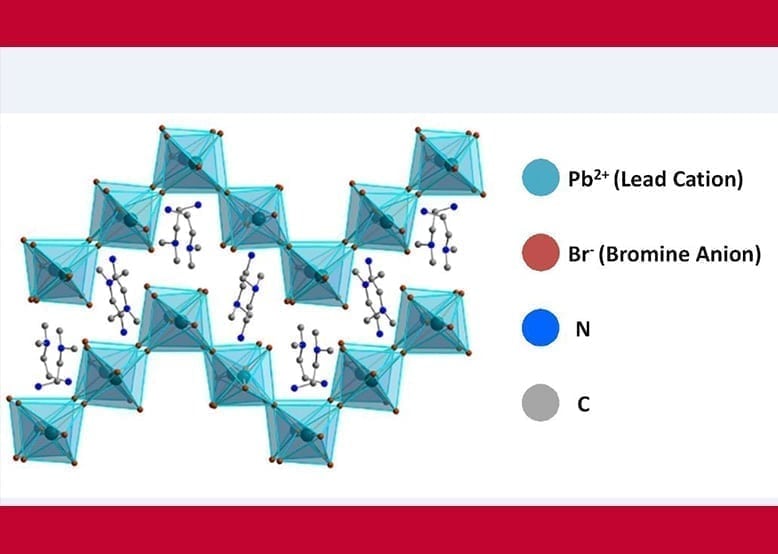Photoluminescence Spectroscopy of a White-Light Emitting Perovskite Structure
In our latest application note “Photoluminescence Spectroscopy of a White-Light Emitting Perovskite Structure” we study the photoluminescence properties of a perovskite light emitter using the FLS1000 Photoluminescence Spectrometer.

Figure 1: Structure of a Perovskite
Hybrid organic-inorganic halide perovskite semiconductors show excellent promise as optoelectronic devices due to their high performance, solution processability, low cost and tunability. They have received widespread attention as light harvesters in photovoltaic cells thanks to the rapid rise of cell efficiencies and their potential of providing high efficiency low cost solar power. ¹,² In addition to their remarkable photovoltaic performance, halide perovskites have also been found to have excellent light emitting properties and are being extensively researched as a new class of solid-state light emitters.3-5
In this note the CIE colour coordinates and the excited state lifetimes of a promising white light emitting perovskite structure, (DMEN)PbBr4, are measured using the FLS1000. These measurements were performed in collaboration with the Kanatzidis group at Northwestern University who synthesised the , (DMEN) PbBr4 sample.
One particularly promising application of perovskites is the creation of a solid-state white-light emitter. In current commercially available solid-state white-light sources, a combination of multiple light emitting diodes and phosphor coatings must be used to generate the white emission.4 However, this multicomponent approach is problematic as the components age at different rates and the colour will therefore drift over time. Two-dimensional (2D) halide perovskites are a promising material for the creation of a single component solid-state white-light source.4
In this application note, the properties of a white-light emitting 2D perovskite structure are characterised with steady state and timeresolved photoluminescence spectroscopy using an FLS1000
Photoluminescence Spectrometer.
Traditional halide perovskites are three-dimensional with an ABX 3 crystal structure; where A and B are two different cations and X is the anion. By altering the choice of cations and anions which make up the structure, the properties can be tuned over a wide range; which makes perovskites a highly versatile material. There is now increasing interest in so-called 2D or layered perovskites, with an A2 BX4 or ABX4 crystal structure; where the size of the A cation is made so large as to reduce the dimensionality of the structure. An example of a 2D perovskite is α-(DMEN)PbBr4 which is a promising whitelight emitter; the structure of which is shown in Figure 2.³ In α-(DMEN)PbBr4, the large 2-(Dimethylamino)-ethylamine (DMEN) cations separate the Pb-Br octahedra into sheets, creating a quasi 2D system.
The move from 3D to 2D has a profound influence on the photophysical properties of the perovskite. In 3D perovskites the polarisable 3D lattice screens the electrostatic attraction between photogenerated electron-hole pairs, resulting in free electrons and holes. In contrast; the layered structure of 2D perovskites confines the photoexcited electrons and holes, resulting in strongly bound electron-hole pairs called excitons. It is self-trapping of these excitons that is thought to be responsible for the white-light emission in these systems.4 Photoluminescence spectroscopy is a powerful tool to better understand the photophysics of excitonic perovskites and drive further development.
App Note: Photoluminescence Spectroscopy of a White-Light Emitting Perovskite Structure
Download our application note: Photoluminescence spectroscopy of a white light emitting perovskite structure .
Further Perovskite Reading
Working with Perovskite Structures?
If you are working with perovskite structures and would like to find out how our team at Edinburgh Instruments can help you with your research, simply contact us today.








